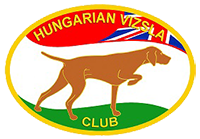What is Elbow Dysplasia
Elbow dysplasia is a complex inherited condition where the elbow joint does not develop correctly. As a dog gets older, the joint undergoes wear and tear and deteriorates, leading to a loss of function. This can cause varying degrees of pain, discomfort, stiffness and lameness.
Is the Vizsla prone to Elbow Dysplasia
Historically relatively few vizslas have been hip scored under the BVA scheme, and the prevalence of Elbow Dysplasia in the breed cannot be determined. There is certainly anecdotal evidence to suggest that it is not uncommon
How Can Elbow Dysplasia be avoided
The best way to avoid Elbow Dysplasia is to use the Kennel Club Health Checker to see whether your puppy comes from pedigree lines where both parents and as many relatives as possible have been Elbow screened – and have low scores.
Screening for Elbow Dysplasia
The British Veterinary Association (BVA) and the Kennel Club (KC) Elbow Dysplasia Scheme assesses dogs’ x-rays to look for abnormalities in elbow joints. A panel of experts provide a graded score for each x-ray. Your vet can organise this for you
Scoring
Each elbow joint x-ray is assessed by BVA/KC scrutineers and the degree of Elbow Dysplasia present is indicated by a scale of 0 to 3 (0 being the best and 3 being the most severe). Only the highest grade of the two elbows is taken as the elbow grade for that dog.
Breeding
Health screening under the KC/BVA Hip/Elbow/Eye schemes, BEFORE mating, is mandatory for Hungarian Vizsla Club members. The Hungarian Vizsla Society has a similar code of conduct. The Kennel Club requires the same tests for membership of its Approved Breeder Scheme.
It is important not just to undertake Health screening – but also to be guided by the results! For the avoidance of Elbow Dysplasia it is recommended that only dogs with good low scores be used for breeding purposes. Ideally dogs and bitches with a score higher than 0 should be discounted.
Family history is also an important consideration
